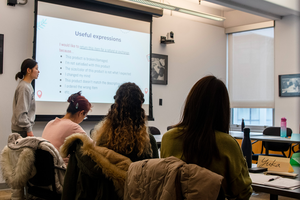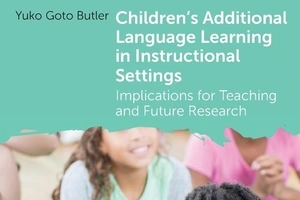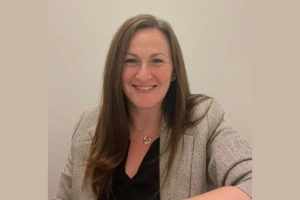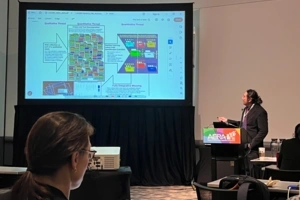Faculty Expert
-
Jessica Whitelaw
Lecturer
Teaching literacy plays a big role in fostering the skills necessary for students to critically examine our world and imagine a better one. So do the arts—and incorporating them into literacy classrooms can enhance critical inquiry, strengthen the imagination, and increase engagement, all while equipping students to better understand the world around them across a variety of modalities.
Jessica Whitelaw, a lecturer in literacy studies at Penn GSE and former literacy coach and middle school teacher, is an expert in arts-based inquiry and literacy.
“I’ve found that arts-based practices are some of the most compelling ways we have to encourage teachers and students to think about the world in front of us and to imagine together, and even create, the world we want to live in,” she says.
She shares the following tips for teachers interested in integrating the arts as a storytelling device into their literacy classrooms.
1. Expand what counts as text
One of the first things teachers can do, Whitelaw says, is to ask what range of “texts” you can bring into the classroom to build criticality and the imagination. These can include everything from illustrated written works, such as picture books or graphic novels, to photos, videos, animations, or even music.
It helps to define the arts in broad terms, too—“not just the kind of art you might find in a museum, but all forms of cultural production that people create every day across many forms of representation,” says Whitelaw.
“When we think this way,” she adds, “we can curate our curriculum to include a wider range of texts and ways of knowing, offering greater opportunity to reflect together on the world we live in.”
2. Choose topics and materials culturally responsive to students
Use materials that reflect students’ cultures and that speak to their concerns—as well as introduce them to new critical perspectives attentive to power. Get to know your students and be strategic about how the topics and materials can elicit the knowledge that they bring.
“I tell students in the syllabus—and I encourage teachers I work with to do so—that this may change,” Whitelaw says. “I may switch up some of the texts as we go, as I get to know who you are, because I dreamed this up before I knew you.”
That means this kind of work requires flexibility and responsiveness to who students are. “You can guess going in. You know a little bit about your roster and what students care about right now,” she explains. “But some of it emerges.”
3. Design classroom activities that maximize participation
When employing arts-based activities in the classroom, Whitelaw recommends teachers choose activities that have “a low threshold but a high ceiling for participation.”
Students often feel intimidated at the prospect of creating an arts-based project; meanwhile, teachers don’t always feel technically prepared to have arts in the classroom. To assuage both concerns, Whitelaw emphasizes that activities should be accessible and encourage criticality, relationality, and dialogue.
For example, activities that involve gathering and remixing existing materials, such as collage, found poetry, or digital stories, can be good places to begin. These activities are concept-driven, require no special resources, are adaptable to any classroom, and can drive classroom discussion through inquiry, juxtaposition, and process.
4. Get students thinking about differences in modalities
Mixing modalities—visual art, text, and even sound—or choosing materials that integrate multiple, like illustrated texts or digital stories, gives students the opportunity to enter and practice critical literacy in different ways.
“What I teach my students is that each modality tells you something different that the others do not,” Whitelaw says. “For instance, the pictures will tell you something the words do not, and vice versa. It’s actually quite a complex relationship that the words and pictures have, or in a digital story that the sound, imagery, and movement have. Working multimodally helps to expand the ways we can tell stories and relate to one another and the material.”
Using graphic novels in the classroom provides a strong example of this. They can’t be read with the old sensemaking tools of print text. “They need to be read with new literacies that are visual, spatial, and linguistic—understanding how gutters work, how thought bubbles are used, how time and narration are conveyed,” she says. “These are arts-based practices, and we can learn from the ways that artists tell stories.”
5. Stay curious and continue learning yourself
For teachers to fully explore arts-based literacies with their students, they need to continue learning and experiencing for themselves the many evolving ways that stories can take shape and the roles they play in our everyday lives.
“Notice how the arts and storytelling work in the world around you. Notice where they can be found and what they engage for you. Notice when you’re interfacing with everyday arts and use this as a way to think about your classroom practices,” Whitelaw says. “I don’t think you can do this work without taking an inquiry stance yourself, without a little imagining and ongoing learning about how stories in different modalities work, and about how vital they are to helping us to imagine, expand our collective responsibilities, and create new worlds.”

Subscribe to the Educator's Playbook
Get the latest release of the Educator's Playbook delivered straight to your inbox.
Media Inquiries
Penn GSE Communications is here to help reporters connect with the education experts they need.










